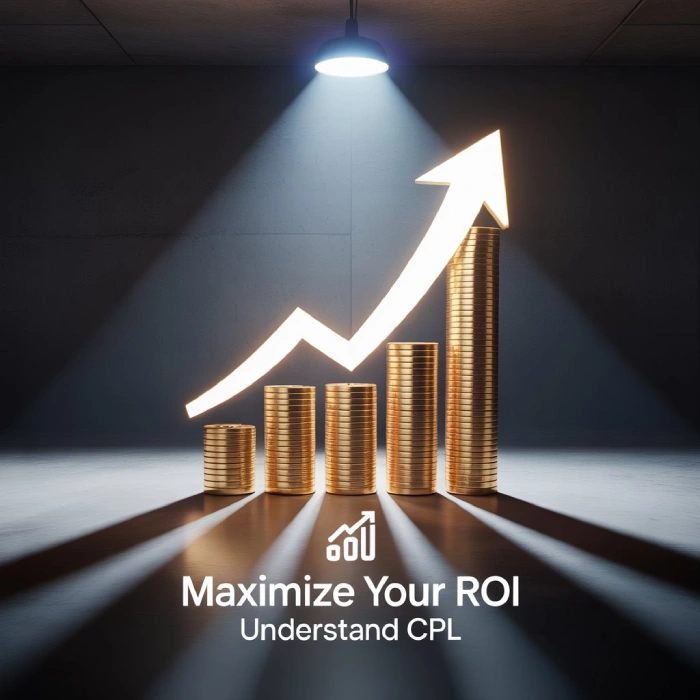If you’re diving into digital marketing, you’ve probably come across acronyms like CPL, CPA, or CPC.
But what is CPL full form in digital marketing? In this blog post, we’ll break it down in simple terms, with real-world examples, calculations, and why CPL is a game-changer for lead-based marketing campaigns.
CPL Full Form in Digital Marketing
CPL stands for “Cost Per Lead” in digital marketing.
It’s a pricing model where advertisers pay for each lead they receive not for impressions or clicks, but for potential customers who show interest (like filling out a form, signing up for a free trial, or requesting a quote).

How CPL Works in Digital Marketing?
In a CPL campaign, your ad budget is spent specifically on acquiring qualified leads. For example, if you’re running a Facebook ad for a digital marketing course and someone fills out a form with their name and email, that’s a lead — and you pay only when that action happens.
If you’re interested in learning how to set up high-converting CPL campaigns from scratch, check out the DSDM Digital Marketing Course designed to turn beginners into performance marketers.
This model is especially useful in:
- B2B Marketing
- Education & Training
- Real Estate
- Insurance
- Saas (Safotware as a service)
| Metric | Full Form | You Pay When… | Best For |
|---|---|---|---|
| CPL | Cost Per Lead | A user submits contact info | Lead generation |
| CPA | Cost Per Action | A user completes a purchase | E-commerce conversions |
| CPC | Cost Per Click | A user clicks your ad | Website traffic |
CPL focuses on generating interest, while CPA targets conversions, and CPC is all about engagement.
Why CPL Matters: Key Benefits
- Better ROI Tracking: You know exactly how much you pay per potential customer.
- Lead Quality Focused: CPL campaigns often involve forms, quizzes, or downloads — filtering out unqualified traffic.
- Scalable: Easy to scale with Facebook, Google, LinkedIn Ads, etc.
- Budget Friendly: You’re not wasting money on just impressions or clicks.
How to Calculate CPL (With Formula and Example)
Example:
CPL = Total Marketing Spend / Number of Leads Generated
Example:
If you spent ₹10,000 on a Google Ads campaign and received 200 leads:
CPL = ₹10,000 / 200 = ₹50 per lead
This means you paid ₹50 for each potential customer.
Best Platforms for CPL Campaigns
- Google Ads – Especially for search intent-based leads.
- Facebook & Instagram Ads – Great for lead forms & awareness.
- LinkedIn Ads – Perfect for B2B leads.
- Native Ad Networks – Like Taboola or Outbrain for wider reach.
- Email Marketing & Funnels – With lead magnets (eBooks, webinars).
Real-World CPL Campaign Example
Case Study: A coaching institute in Delhi ran Facebook Lead Ads offering a free digital marketing webinar.
They spent ₹5,000 and generated 150 leads.
Result:
CPL = ₹33.33
20% converted into paid students.
This type of CPL campaign can offer a strong return on ad spend (ROAS) if leads are nurtured well.
Average CPL Benchmarks by Industry
| Industry | Average CPL (USD) |
|---|---|
| Education | $55 – $75 |
| Real Estate | $30 – $60 |
| B2B SaaS | $60 – $100+ |
| E-commerce | $15 – $45 |
| Finance/Insurance | $60 – $90 |
How to Lower Your CPL:
Pro Tips
- Target the right audience with interest-based filters
- Optimize your landing page for conversions
- Use compelling CTAs (Call-To-Actions)
- Test different ad creatives
- Offer lead magnets (like free PDFs or discount codes)
- Add trust elements like testimonials & reviews
Common Mistakes to Avoid in CPL Campaigns
- Targeting too broad an audience
- Not following up with leads quickly
- Focusing only on quantity, not quality
- Using unclear forms with too many fields
When Should You Choose CPL Over Other Models?
Choose CPL When:
- Your main goal is lead generation, not sales.
- You’re selling high-ticket products or services.
- You need to build an email list or CRM database.
| Aspect | B2B | B2C |
|---|---|---|
| CPL Cost | Higher | Lower |
| Lead Nurturing | Long-term (Emails, Sales) | Short-term (Offers) |
| ROI Timeframe | Weeks or months | Immediate or 1–7 days |
Future of CPL: Still Relevant in 2025?
Absolutely. With rising ad costs, marketers want measurable results. CPL offers transparency and performance-driven budgeting. In fact, AI-based lead scoring and CRM integrations are making CPL campaigns more efficient and profitable.
Conclusion:
Is CPL Right for Your Business?
If your business relies on leads to drive sales, then CPL is a smart, measurable, and scalable model. It’s perfect for educational institutes, service-based businesses, SaaS, and consultants.
FAQ
What is the full form of CPL in digital marketing?
CPL stands for Cost Per Lead.
What is a good CPL?
It depends on your industry, but typically $15–$75 is considered good.
Is CPL better than CPA?
If your goal is lead generation, CPL is better. For sales-focused goals, CPA is ideal
How can I reduce my CPL?
Improve ad targeting, landing page UX, and use lead magnets.
